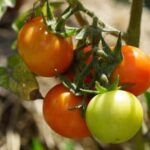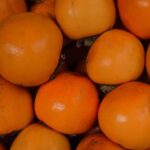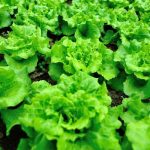Are you interested in adding a new twist to your perennial garden? In this article, we will explore the concept of planting vegetables in perennial gardens and discuss the benefits of doing so.
From selecting the right types of perennial vegetables to tips on site selection and preparation, we will cover everything you need to know to successfully incorporate vegetables into your perennial garden. Additionally, we will delve into companion planting, planting techniques, maintenance and care, harvesting and rotation, as well as creative design ideas for a visually appealing garden.
Perennial gardens are known for their low-maintenance nature and long-lasting blooms. By adding vegetables to this mix, you can enjoy an edible landscape that provides both beauty and sustenance. In this comprehensive guide, we’ll provide insights on selecting the right types of vegetables that can thrive in a perennial garden, such as asparagus, rhubarb, and artichokes. From there, we will cover important considerations such as site selection and preparation for optimal growth of both vegetables and perennials.
In addition to discussing practical aspects such as planting techniques and maintenance, we will also touch upon the aesthetic aspect of incorporating vegetables into a perennial garden. Whether you’re a seasoned gardener or just starting out, this guide will help you transform your garden into a bountiful oasis of both flowers and food. So let’s dive in and discover how to seamlessly blend vegetables into your perennial landscape.
Selecting the Right Perennial Vegetables
When it comes to planting vegetables in perennial gardens, selecting the right perennial vegetables is crucial for a successful and bountiful garden. There are several types of vegetables that can thrive in perennial gardens, providing a continuous harvest year after year. Some of the best options for perennial vegetables include:
- Asparagus: Asparagus is a great choice for a perennial garden, as it can produce delicious spears for up to 20 years with proper care. It prefers well-drained soil and plenty of sunlight, making it an ideal addition to the garden.
- Rhubarb: Rhubarb is another excellent perennial vegetable that not only adds beauty to the garden with its large, lush leaves but also provides tart stalks that are perfect for pies and desserts. It thrives in cooler climates and requires fertile, well-drained soil.
- Artichokes: Artichokes are stunning plants that can complement the aesthetic of any perennial garden while producing tasty edible buds. They prefer full sun and mild winters, making them a fantastic addition to Mediterranean or coastal gardens.
These perennial vegetables not only add variety to the garden but also offer long-term benefits, making them a valuable addition to any perennial garden.
In order to ensure the success of these perennial vegetables in the garden, it’s essential to consider factors such as climate, soil quality, and sunlight exposure. By carefully selecting the right types of vegetables that align with these factors, gardeners can create a thriving and productive perennial vegetable garden that will provide a reliable harvest year after year.
With proper care and maintenance, these perennial vegetables can become a staple in the garden landscape, offering both visual appeal and culinary delight.
Site Selection and Preparation
Planting vegetables in perennial gardens requires careful consideration of the site selection and preparation to ensure the optimal growing conditions for the vegetables. When choosing the location within the perennial garden, it is essential to select an area that receives sufficient sunlight, as most vegetable crops thrive in full sun. Additionally, the chosen spot should have well-drained soil to prevent waterlogging, which can be detrimental to vegetable plants.
To properly prepare the soil for planting vegetables in a perennial garden, it is recommended to amend the soil with organic matter, such as compost or aged manure, to improve its fertility and structure. This will provide essential nutrients for the vegetable plants and promote healthy root growth. It is also important to test the pH level of the soil and make any necessary adjustments to ensure that it falls within the optimal range for vegetable cultivation.
In addition to soil preparation, considering factors such as wind exposure and proximity to other plants in the perennial garden is crucial when selecting a site for planting vegetables. Wind can affect moisture levels and potentially damage delicate vegetable plants, so it is advisable to choose a location that offers some protection from strong winds. Furthermore, practicing proper spacing between perennial plants and vegetables will help prevent competition for resources and ensure adequate airflow around the plants.
Overall, paying careful attention to site selection and soil preparation is essential when planting vegetables in perennial gardens. By providing optimal growing conditions and taking necessary precautions, gardeners can create a productive and harmonious environment where both perennial flowers and vegetable crops can thrive.
| Site Selection Factors | Soil Preparation Tips |
|---|---|
| Sufficient sunlight | Amend soil with organic matter |
| Well-drained soil | Test pH level of soil |
| Protection from strong winds | Proper spacing between plants |
Companion Planting
By carefully selecting companion plants for the perennial vegetables in the garden, you can help maintain soil health, attract beneficial insects, and deter harmful pests. For example, planting aromatic herbs like basil or oregano near perennial vegetables such as tomatoes or peppers can help repel insects that are harmful to these crops. Additionally, certain flowering perennials like marigolds can attract pollinators that are essential for vegetable production.
Furthermore, companion planting also extends to the relationship between vegetables themselves. Some vegetables thrive when planted alongside each other, while others may compete for resources or be susceptible to similar pests and diseases.
Understanding which vegetable combinations work well together and which should be kept apart is crucial for creating a harmonious and productive garden. When planning your perennial vegetable garden, consider incorporating companion plants not only for their functional benefits but also for their aesthetic value in creating a visually appealing and diverse garden space.
| Benefit | Example |
|---|---|
| Enhance growth | Planting aromatic herbs near tomatoes to repel harmful insects |
| Attract beneficial insects | Using flowering perennials like marigolds to attract pollinators |
| Natural balance | Reduced need for chemical pesticides and fertilizers |
Planting Techniques
When incorporating vegetables into a perennial garden, it is essential to choose the right planting techniques to ensure the success of both the vegetables and the existing perennial plants. Here are some detailed instructions on how to plant vegetables in a perennial garden, including spacing, depth, and care instructions:
1. Spacing: When planting vegetables in a perennial garden, it is important to consider the spacing between each plant to allow room for growth and prevent overcrowding. Make sure to follow the specific spacing recommendations for each type of vegetable. For example, asparagus should be planted 18 inches apart in rows that are 4-5 feet apart, while rhubarb requires around 3-4 feet of space between each plant.
2. Depth: The depth at which you plant your vegetables can significantly impact their growth and overall health. When planting perennial vegetables like artichokes, it is crucial to set them at the right depth in order for them to thrive. For instance, artichoke crowns should be planted about 6-8 inches deep in well-draining soil with plenty of sunlight.
3. Care Instructions: Once planted, it is important to provide proper care for the perennial vegetables in your garden. This includes regular watering, especially during dry periods, and applying organic compost or fertilizer as needed to promote healthy growth. Additionally, mulching around the plants can help retain moisture and suppress weeds.
By following these detailed planting techniques for perennial gardens, you can ensure that your vegetables have the best chance of flourishing alongside your existing perennial plants. Remember that proper spacing, depth considerations, and ongoing care are all essential components of successfully integrating vegetables into a perennial garden.
Maintenance and Care
Watering
Maintaining proper moisture levels is essential for the health and well-being of perennial vegetables in the garden. Adequate watering is crucial, especially during dry periods, to ensure that the plants can continue to thrive and produce an abundant harvest.
It is important to water deeply and consistently, allowing the water to penetrate the soil and reach the roots of the plants. Consider installing a drip irrigation system or soaker hoses to provide a steady supply of water directly to the root zone, minimizing water waste and ensuring efficient hydration for the vegetables.
Fertilizing
Fertilizing perennial vegetables is another key aspect of their care that should not be overlooked. Since perennial plants have longer growing seasons compared to annual vegetables, they may require regular feeding to sustain their growth and productivity.
Incorporating organic matter, such as compost or well-rotted manure, into the soil can help improve its fertility and structure, providing essential nutrients for the vegetables. Additionally, applying a balanced organic fertilizer during the growing season can further support the nutritional needs of perennial vegetables.
Managing Pests and Diseases
Like any other garden plants, perennial vegetables are susceptible to pest infestations and diseases that can negatively impact their health and yield. Implementing preventive measures, such as crop rotation and practicing good garden hygiene, can help reduce the risk of pests and diseases. Additionally, regularly inspecting the plants for any signs of trouble, such as unusual discoloration or damage, can enable early intervention to address potential issues before they escalate.
Consider using natural pest control methods or organic pesticides if necessary, while being mindful of their potential impact on beneficial insects and wildlife in the garden. By staying vigilant and proactive in managing pests and diseases, it is possible to safeguard the well-being of perennial vegetables in the garden.
Harvesting and Rotation
Perennial vegetables offer the advantage of producing harvestable crops year after year, making them an excellent addition to any garden. When it comes to harvesting these long-lasting veggies, it’s important to follow best practices to ensure a bountiful yield and healthy plants.
Timing Is Key
Timing is crucial when it comes to harvesting perennial vegetables. Asparagus, for example, should be harvested when the spears reach about 8 inches in length. Rhubarb stalks are ready for harvest in the spring, while artichokes should be picked before the scales begin to open. Understanding the specific timing for each perennial vegetable ensures that they are harvested at their peak flavor and texture.
Importance of Crop Rotation
Crop rotation is essential for maintaining soil health and preventing the buildup of pests and diseases in perennial gardens. By rotating where different types of vegetables are planted each year, you can help maintain soil fertility and reduce the risk of pest infestations. This practice also aids in managing nutrient levels in the soil, as different crops have varying nutrient needs.
Benefits of Rotation
Incorporating crop rotation into your perennial garden not only benefits the soil but also promotes healthier plant growth. Different types of vegetables have unique effects on the soil, with some depleting certain nutrients while others replenish them. Rotating crops helps balance out these effects and prevents nutrient deficiencies or imbalances from occurring over time.
Overall, practicing regular crop rotation in your perennial vegetable garden contributes to sustainable gardening practices and supports the long-term health and productivity of your plants.
Creative Design Ideas
Incorporating vegetables into a perennial garden not only adds an element of surprise and functionality but also offers numerous creative design opportunities. Whether it’s using colorful chard as a border plant, training vine crops to climb trellises or arbors, or interspersing herbs among the perennials, there are endless possibilities for creating a visually appealing and productive garden space.
By carefully planning the layout and considering both the aesthetic and functional aspects, you can create a stunning garden that provides bountiful harvests as well as beauty.
One creative way to integrate vegetables into a perennial garden is by utilizing vertical gardening techniques. This can include growing climbing plants such as peas, cucumbers, or even small varieties of pumpkins up trellises or other vertical structures. Not only does this make efficient use of space, but it also adds dimension and interest to the garden while keeping the vegetables off the ground where they can be more easily tended and harvested.
Another aesthetically pleasing approach is to create “garden rooms” within the perennial space, dedicating specific areas to vegetable patches adorned with decorative elements like ornamental containers or whimsical garden art. These designated spaces not only serve practical purposes but also become charming focal points within the larger garden landscape.
Sometimes fully integrating vegetables with ornamental plants doesn’t have to be complex; simply interplanting leafy greens like kale or Swiss chard among flowers or shrubs can add color and texture without sacrificing aesthetics.
Lastly, incorporating raised beds into the design of the perennial garden allows for greater control over soil quality, moisture levels, and drainage for your vegetables while adding architectural interest to the overall landscape. Raised beds can be built at varying heights and shapes to complement existing pathways or coordinate with other hardscape features in your perennial garden.
This allows for an organized and visually appealing structure that still provides ample growing space for various types of edible plants. The opportunities for creative integration of vegetables into a perennial garden truly are endless.
Frequently Asked Questions
Can You Plant Vegetables in a Flower Bed?
Yes, you can plant vegetables in a flower bed. However, it’s important to consider the specific needs of both the flowers and the vegetables before planting them together. Some vegetables may require more space or sunlight than others, so careful planning is essential.
What Vegetable Garden Plants Are Perennials?
There are several vegetable garden plants that are perennials, meaning they will come back year after year. Some examples include asparagus, rhubarb, artichokes, and certain herbs like rosemary and thyme. Incorporating perennials into your vegetable garden can provide long-lasting produce without the need for replanting every year.
What Vegetables Should Not Be Planted Next To?
Certain vegetables should not be planted next to each other due to their growth habits or susceptibility to pests and diseases. For example, potatoes should not be planted near tomatoes or peppers to avoid the spread of diseases like blight.
Similarly, planting onions next to beans can inhibit the beans’ growth. It’s important to research companion planting and crop rotation guidelines when planning your vegetable garden layout to maximize the health and productivity of your plants.

If you’re looking to get into vegetable gardening, or are just looking for some tips on how to make your current garden better, then you’ve come to the right place! My name is Ethel and I have been gardening for years. In this blog, I’m going to share with you some of my best tips on how to create a successful vegetable garden.





